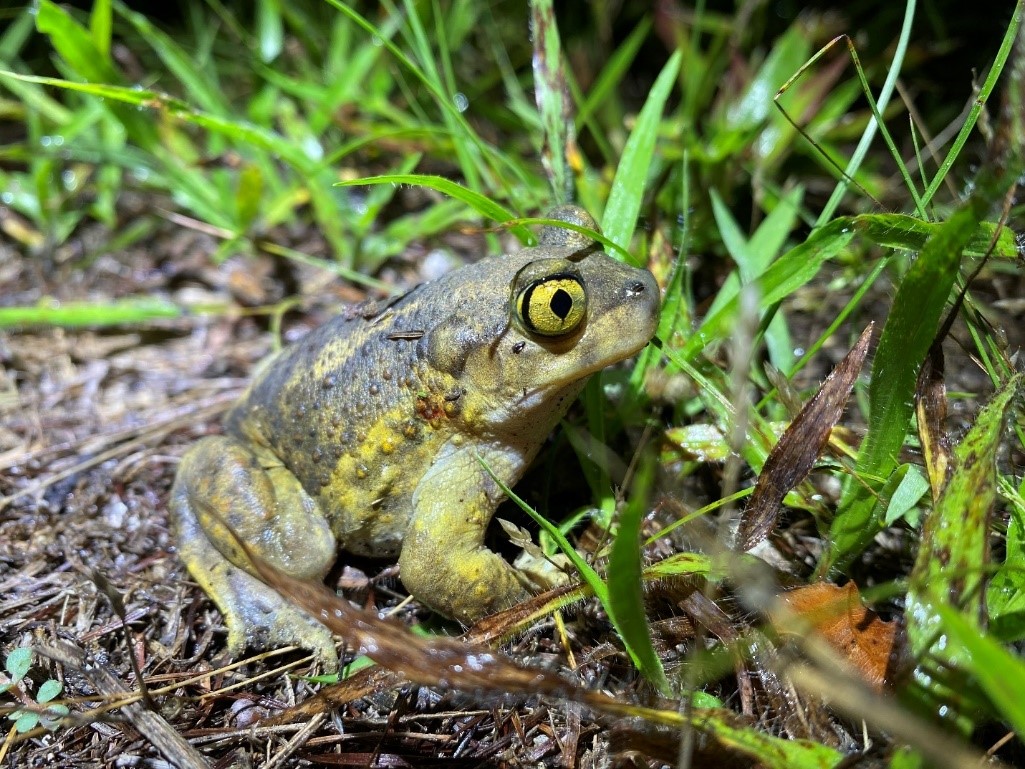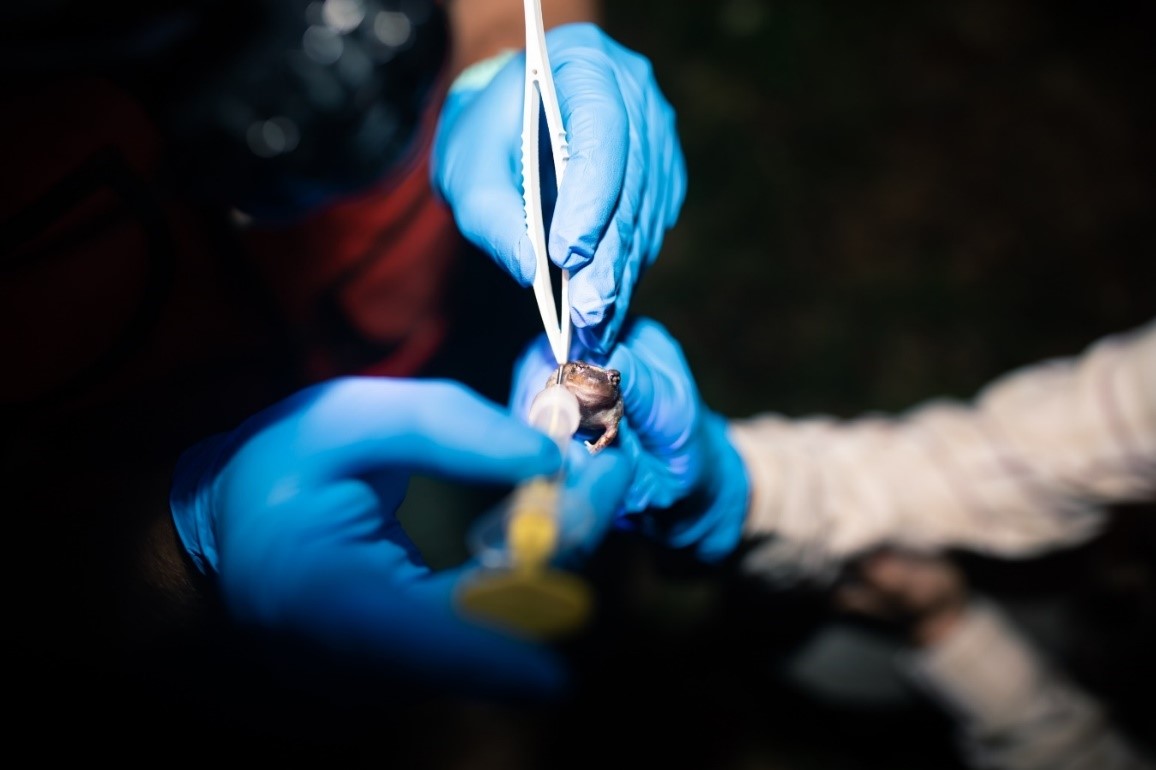Little toad gets help from DEM, South County conservation groups and more
The Rhode Island Department of Environmental Management (DEM) has partnered with the Roger Williams Park Zoo, the University of Rhode Island (URI), the U.S. Fish and Wildlife Service (USFWS), and other conservation organizations to study and restore populations of the state endangered Eastern Spadefoot Toad (Scaphiopus holbrookii).
Conservationists and volunteers recently rescued around 1,000
spadefoot toad tadpoles from a breeding wetland that was at immediate risk of
drying out. These tadpoles were raised to metamorph-stage "toadlets"
under the care of Lou Perrotti, Director of Conservation at the Roger Williams
Park Zoo. After being screened for disease, the tiny metamorphs were released
at three sites in Washington County that have been targeted for spadefoot toad
restoration.
Two of the release sites are home to artificially constructed wetlands, designed with spadefoot toads in mind. The artificial wetlands were built in 2019 and 2021 on protected lands with appropriate soil, habitat types, and in proximity to historic populations of spadefoot toads.
These wetlands
also benefit a host of other wildlife species and additional sites are slated
for future construction. The project, which has been dubbed "Operation
Spadefoot RI," involves numerous conservation agencies and organizations.
The effort brings together expertise and resources from DEM, Roger Williams Park Zoo, URI, USFWS, the Rhode Island Natural History Survey, the Richmond Rural Preservation Land Trust, and the South Kingstown Land Trust, along with the help of over 80 volunteers who spent a combined 340 hours assisting with the construction of the newest wetland. The Nature Conservancy and the Natural Resources Conservation Service have lent support to the project as well.
"It's great to see proactive rare species conservation
taking place in Rhode Island," said Perrotti. "The spadefoot toad is
definitely a species in need of some help and the involvement of so many
conservation partners within the state is inspiring."
Spadefoot toads are the only state endangered amphibian in Rhode
Island, where only a handful of populations are known to biologists. The
species requires specialized, highly ephemeral wetlands for breeding, much of
which has been lost or degraded due to agriculture and human development.
"Because they have such specific habitat requirements for survival and reproduction, they are extremely vulnerable," said Scott Buchanan, biologist with DEM's Division of Fish and Wildlife.
"By not only
protecting lands and managing habitats, but by directly supporting populations,
we have the opportunity to both increase the number of populations on the Rhode
Island landscape, and to increase the chances that introduced and existing
populations will persist well into the future."
Along with restoration efforts, DEM's Division of Fish and Wildlife has conducted statewide surveys for spadefoot toads during the 2020 and 2021 field seasons. The nighttime surveys, which rely on headlamps to detect toad eye-shine, have proved effective in identifying new populations and learning more about them.
"We want more than dots on a map," said Buchanan.
"To carry out informed and effective conservation, we need to know the
geographic extent of populations, how large the populations are, where the
breeding wetlands are, and how the toads are using local habitat
features."
The surveys help to generate information that leads to greater
insight on all this and more. Reports from members of the public have been
particularly helpful in providing leads for sites to survey, according to
Buchanan. In the event that one encounters a spadefoot toad in the state, the
public is encouraged to photograph the animal and send the photograph to the
Rhode Island Division of Fish and Wildlife by emailing DEM.DFW@dem.ri.gov.
Follow the Division of Fish and Wildlife on Facebook and
Instagram (@RI.FishandWildlife) for timely updates. For more information about
DEM divisions and programs, visit www.dem.ri.gov, follow us on Facebook or
Twitter (@RhodeIslandDEM), or subscribe to our Monthly Newsletter.
Related
links

